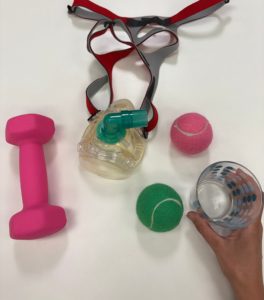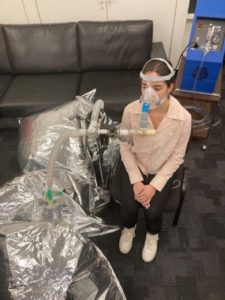A novel home- based clinical trial: Restoration of Respiratory and Upper Limb Function after cervical Spinal Cord Injury
A new research project led by Professor David Berlowitz, in collaboration with the University of Melbourne, Austin Health and Institute for Breathing and Sleep, is looking at how combining exercise training with intermittent therapeutic hypoxia may promote new and/or stronger neural connections to the damaged spinal cord and enhance function.
The novel home- based clinical trial is called ‘Restoration of Respiratory and Upper Limb Function after cervical Spinal Cord Injury (RRULI)’ and the research team are looking for people with spinal cord injury to participate.
‘Exercise training has been shown to increase muscle strength and independence in activities of daily living for people who have a spinal cord injury, and there is emerging evidence that suggests combining this with therapeutic intermittent hypoxia can be beneficial’ says trial co-ordinator Laura Stendell.
‘Therapeutic intermittent hypoxia involves breathing air with oxygen levels similar to those at an altitude of 6000 meters and considered safe because the low-oxygen air is inhaled for brief intervals and alternated with short periods of breathing normal air’
The RRULI trial will investigate the benefit of therapeutic intermittent hypoxia on exercise training in a 6-week intervention to improve upper-limb functional and breathing outcome measures in a home-based setting for individuals with tetraplegia.
RRULI researchers are recruiting interested people who are: over 18 years old, diagnosed with a spinal cord injury (C2 to T1 level of injury), had injury or onset at last 12 months ago, and have motor incomplete paralysis in the upper limb. Participation will involve three intervention sessions per week for six weeks at home, plus baseline and final assessments conducted at Austin Health.
For more information on RRULI, contact Laura on laura.stendell@unimelb.edu.au.
Upper limb strength and functional training
Therapeutic intermittent hypoxia set-up




